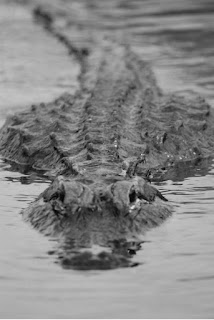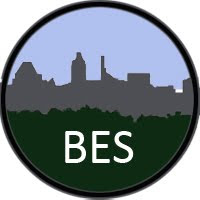Swamps and the City
Laura A. Ogden, of Florida International University is an anthropologist and Co-Principal Investigator of the Florida Coastal Everglades LTER. She is also a regular collaborator with the BES community and has been involved with us and others in cross site projects concerning environmental justice, and the social ecology of lawns. She has additional projects addressing land cover change, political ecology, and vulnerability to hurricanes, among others (http://fcelter.fiu.edu/about_us/personnel/profiles/index.htm?resnum=156&display=projects). So her recent book, entitled Swamplife: People, Gators, and Mangroves Entangled in the Everglades (2011, Univ. of Minnesota Press, Minneapolis), is of interest to our community.
 |
||
| Photo by Deborah Mitchell. |
Ogden’s book ranges widely, dealing with how Native American peoples, white alligator hunters, scientists, conservationists, and even outlaws, created various conceptual and literal landscapes in the Everglades. The reciprocity of the natural – alligators, snakes (real and imagined), mangroves, hydrological fluctuations, and fire, with the human – lifeways, laws, territorial claims, the politics of scientific exploration, and the establishment and enforcement of state and national parks, are all part of swamplife. This concern with the hybridity of landscapes in the Everglades parallels our conceptualization of the Baltimore region.
Hybrid Landscapes
Even though the Everglades is now and has always been a hybrid human-natural system, as Ogden so engagingly shows, mainstream or outside culture has neglected or erased much of the entangled human history and intimate inhabitation of the Everglades. Reading this book is a trip through several good yarns, interesting interviews with people who once made their living by hunting in the ‘Glades, and documentation of how some key habitats came to be considered wild and imminently conservable. For example, Royal Palm Hammock was seen by early scientific explorers as a pristine tropical outlier, untouched by human history. Any Indian effects were disregarded as having been essentially a part of the wild landscape. However, the hammocks, as high ground in a watery ‘scape, were precious sites for all who occupied, lived in, traversed, or made their living in the Everglades. Such was the case prior to European contact and through the early 20th century when even the poor white residents were finally dispossessed to establish the national park. Indeed, the intensity of human entanglement with the hammocks is illustrated by the evidence that many were at least partially constructed by accretion of the debris of people’s everyday life before the historic record began.
Overcoming Erasure
Much of the academic and practical approach to the Everglades has intentionally or accidentally erased the human side of the story. Ogden succeeds in bringing the human history of the Everglades and its erasures to light. She puts the humans back in the picture. She also highlights the role of class as well as ethnicity in such erasures.
Overcoming human erasure parallels one of the big tasks we have in the Baltimore as well. Urban systems have been predominantly seen as strictly human places. Of course there are deep roots of knowledge about the entanglements of nature in cities. But the weight of the academy has been on the human side of the scale. We, like Ogden in Swamplife, struggle to understand how humans and nature are entangled in the system we study. However, in the City-Suburban-Exurban system the erasure has been opposite to the one she overcomes in her book. We are peeling back the assumptions that have allowed people to erase the natural in the city. So there are many ways in which the city and the swamp are fighting the same intellectual battles. People and nature go together, whether in town or out.


